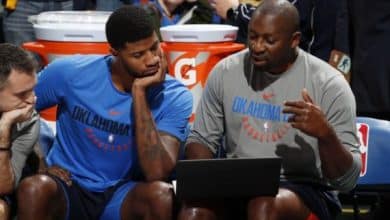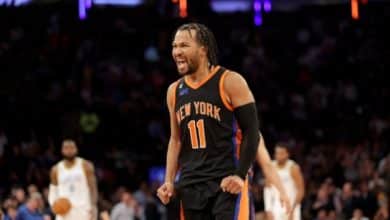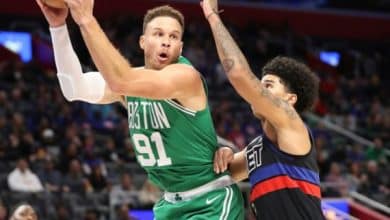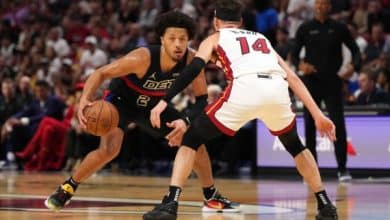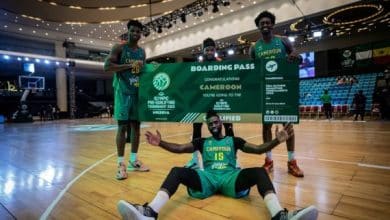
If Ray Allen has the nickname of Jesus, it is a little bit thanks to him.
The scene takes place in the movie “He Got Game”, by Spike Lee. Jake Shuttlesworth, played by Denzel Washington, chats with his son Jesus, played by Ray Allen. The discussion focuses on the origin of the first name Jesus, the subject of a quarrel at the start of the film between the two men.
Jake then explains that his favorite player was named Earl Monroe and that his nickname during his years on the playground of Philadelphia was Jesus. Hence the name of his son.
The reference is pointed, but not insignificant: Earl Monroe achieved a feat, remaining in everyone’s minds without any legendary performance or insane statistics. In fact, he marked the spirits by the only thing that really matters, namely the ground.
Not easy, in a league dominated at the time by a certain Kareem Abdul Jabbar or a few big scorers like Julius Erving, Rick Barry and George Gervin…
The legend of the playgrounds
Vernon Earl Monroe was born on November 21, 1944, in Philadelphia, Pennsylvania. He grew up in South Philly and, at a very young age, he was passionate about sports. Not basketball, but rather baseball, or even traditional football. Except that with his height of 1m91 at only 14 years old, many orange ball coaches are interested in his profile…
His integration into basketball is going so well that he immediately becomes a fan of this sport. He is then propelled pivot in his team, a position he will occupy most of the time in his youth.
At the same time, Earl Monroe perfected his game on playground of Philadelphia and his reputation grew, so much so that he was nicknamed Black Jesus. The legend even says that his real nickname was Jesus, but the predominantly white media created a distinction by affixing the adjective black. What became Black Jesus.
During his high school years at John Bartram, and to describe his immense offensive game, his teammates called him Thomas Edison, in reference to the American inventor.
Earl Monroe then turns to the small black faculty of Winston-Salem State, based in North Carolina, about 145 kilometers from a certain college in Chapel Hill. The future of… Michael Jordan.
The Philadelphia native is progressing there every year. This is evidenced by his average points: 7.1 points in freshman23.2 as sophomore and 29.8 points in junior.
Coach Clarence Gaines, a member of the Hall of Fame since 1982, becomes an important father figure in the eyes of Earl Monroe and, during his year senior, his most famous nickname is coined by a local journalist. The original expression is “Earl’s Pearls”, a plural used by the author to describe his spectacular way of scoring his points. History will remember “The Pearl”, or the pearl in French.
Indeed, in 1966/67, “Earl the Pearl” turns to 41.5 points per game, is voted best player in the country and takes his college to the NCAA title.
His Bullets years
Thanks to his magnificent performances at university, Earl Monroe was chosen by the Baltimore Bullets in 2nd position in the 1967 Draft, behind Jimmy Walker, the father of Jalen Rose.
He managed a very good campaign, with 24.3 points on average, the 13th best performance in history for a rookie, with in particular a peak of 56 units against the Lakers. In his wake, the Bullets won 16 more games than the previous season.
The following year, Earl Monroe confirms his good rookie season by climbing to 25.8 points per game, the best mark of his career. In addition to his individual talent, Baltimore has built a wonderful team around him. So magnificent that she wins 57 matches.
The elements of this success are multiple. First of all the pivot Wes Unseld, author of 13.8 points and 18.2 rebounds on average, becomes rookie of the year and MVP, an extremely rare event in history, since only Wilt Chamberlain had succeeded in this, in 1960. Since then, nobody has equaled this performance!
Then there are some nice talents in the league at that time, like Gus Johnson, Jack Marin and Kevin Loughery, all supported by an ultra-efficient run-and-gun and the fantastic defensive presence of Wes Unseld.
The Bullets reach the semi-finals of the division, time obliges, because the cutting in conference does not appear until 1970, but their hopes are shattered by the Knicks, who inflict a sweep. Rebelote the following year, but this time, Baltimore lost in Game 7, still against New York, future champion.
In 1970/71, Earl Monroe discovered the Finals against the Bucks, but the duo Kareem Abdul-Jabbar – Oscar Robertson is far too strong and this series ends after 4 short games…
The future therefore seems bright for the Bullets because, with a few good additional picks, the title is not impossible to win. Only, salary problems tarnish the relationship between “The Pearl” and its franchise.
On November 10, 1971, after only 3 games, the unthinkable ended up happening: the combo guard is transferred to the Knicks, the sworn enemy, against Mike Riordan, Dave Stallworth and cash.
His New York period
Earl Monroe arrives in New York averaging 23.7 points in four full seasons in Baltimore. He then finds his best opponent and Draft companion, Walt Frazier.
Since 1967, Monroe has actually faced Frazier 21 times and “The Pearl”‘s offensive game was always put to the test with “Clyde’s” legendary defense. But this transfer also raises a few questions: how to make the two men live together and, above all, how to integrate into the perfect collective game of the Knicks an offensive talent so strong but so demanding of balls?
Earl Monroe has some difficulties integrating. He carries the ball less and becomes less efficient. In addition, he suffers from knee and ankle problems, ultimately only playing 60 games, for an average of 21 minutes, which drops him to 12 points per game. Despite everything, New York again reached the Finalsbut Los Angeles wins in 5 rounds.
Then the second season, the transplant takes, “The Pearl” scores 15.5 points on average and its association with Walt Frazier is described as the Rolls Royce of backcourt. The Knicks won 57 games and Monroe found the Bullets in the playoffs and won the series in 5 games. Then, the New Yorkers eliminate the Celtics, however favorites, to find the Lakers for a third confrontation at the Stade des Finals.
Earl Monroe scored 23 points in the victorious Game 5 and the Knicks won the second title in their history, three years after that of 1970. But this achievement was also the last for New York, because the 1968 Rookie of the Year saw all his teammates retire season after season, and even Walt Frazier transferred to Cleveland in 1977.
Finding himself alone in command, “The Pearl” regains his offensive sensations, with three new campaigns at 20 points per game, but his two exercises end in an early vacation. He retired in 1980, at the age of 35, and then became a manager in the music industry, before returning to basketball as a commentator.
A virtuoso of the game
In 1989 Earl Monroe joined the Hall of Fame and became one of the 50 best players in NBA history in 1996. Ultimate tribute on December 1, 2007: the Washington Wizards (formerly Baltimore) retired his number 10.
But what will remain of “The Pearl” is the virtuosity of his playing. spin move was perfect and his offensive imagination had no limits. But he was also a very intelligent player, arriving in New York with the label of maestro one-on-one, and he managed to blend into the Knicks’ game, becoming one of Madison Square Garden’s darlings.
Earl Monroe thus played in a very collective way, often preferring to pass the ball to a demarcated teammate, also endowed with better involvement in defense, to relieve Walt Frazier. An outstanding professional and a legend of the game…
Statistics
926 games in 13 seasons
18.8 points, 3.0 rebounds, 3.9 assists and 1.3 steals average
46.4% shooting, 80.7% free throws
Awards
Hall of Famer
Member of the NBA Top 75
NBA champion in 1973
All NBA First Team in 1969
Rookie of the Year in 1968
All-Star in 1969, 1971, 1975 and 1977

